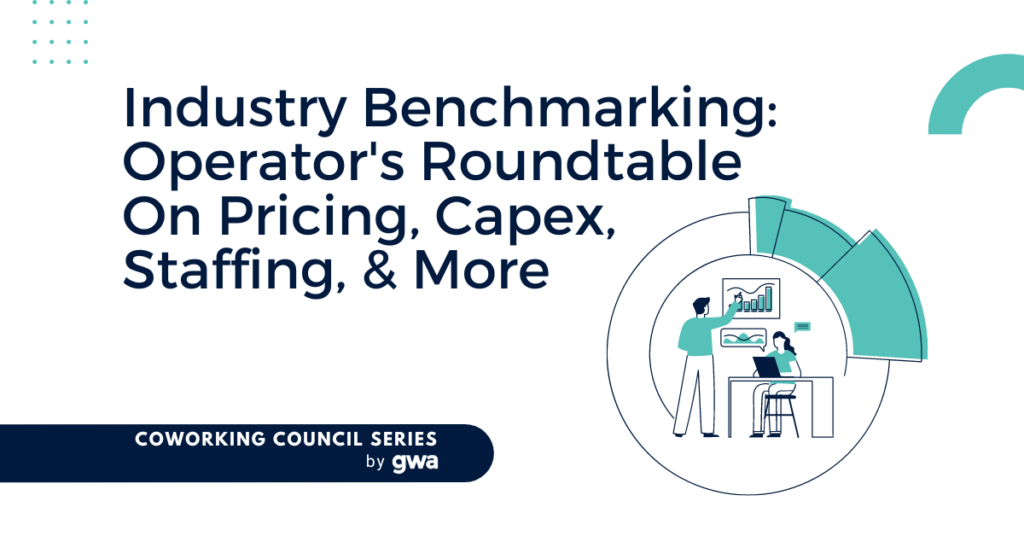Benchmarking Success in Flexible Office Spaces
The flexible office space sector is witnessing a transformative phase, driven by shifts in work patterns and the growing demand for adaptability. During our January Coworking Council Series Webinar we brought together industry operators from across the nation to share their benchmarking data and insights and offer expert advice giving listeners a roadmap for navigating the complexities of the flexible office space industry.
Key Data Points Discussed
Capex Costs:
The panelists shared their varied approaches to managing capital expenditures and negotiating lease terms with landlords. For instance, Flip highlighted a strategy of securing turnkey build-outs at a cost-effective rate, leveraging landlord contributions to minimize out-of-pocket expenses. Similarly, Carr’s strategy through their managed deals is obtaining 100% of CapEx costs from the owner to minimize out-of-pocket expenses and align with their growth strategy. Both of these approaches underscores the importance of strategic negotiations to balance risk and reward.Revenue Projections and Financial Modeling:
Accurate revenue projections are crucial for the sustainability of flexible office spaces. Ashley discussed the importance of understanding market dynamics to set competitive pricing for private offices, virtual offices, and additional amenities. By leveraging detailed financial models and maintaining a pulse on market demands, operators can position their businesses for success and sustainability in the competitive landscape of coworking.Occupancy and Profitability Metrics:
Achieving a benchmark occupancy rate is key to operational profitability. Flip mentioned “65% is average. We’ve got some that are as low as 60… and some that are as high as 70.” Ashley also agreed with 65% being her stabilized occupancy. The speakers highlighted target profit margins and the significance of maintaining rate integrity to ensure financial health. Focusing on delivering value, optimizing operational efficiencies, and strategic pricing helps in achieving the desired profit margins, ensuring the business remains financially healthy and capable of growth and expansion.Operating Expenses and Staffing:
Managing non-rent operating expenses, such as payroll and marketing, is essential for maintaining a healthy bottom line. Ashley mentioned “Our highest cost apart from rent is people, as it should be.” Optimizing staff-to-space ratios and controlling expenses while maintaining the quality of service and staff necessary to run successful flexible office spaces is key.Real Estate Deal Structures:
We explored a range of real estate deal structures, from traditional leases to innovative managed agreements and revenue-sharing models. Ashley provided insights into the complexities and essential negotiation skills required to establish mutually beneficial partnerships with property owners. Flip emphasized his strategy of securing turnkey build-outs at competitive rates, aiming to minimize initial expenditures by negotiating significant tenant improvement allowances with landlords. Meanwhile, Rob offered a unique perspective, focusing on developing a community-centric ecosystem in Charlottesville. His approach goes beyond conventional coworking spaces, aiming to contribute to broader community objectives by attracting and retaining local talent.
Conclusion:
As the flexible office space industry continues to evolve, the insights shared by these industry leaders offer valuable benchmarks from their own personal experience on running a profitable flex workspace. From strategic planning, financial acumen, and adaptability this discussion provides valuable guidance for stakeholders looking to capitalize on the opportunities ahead.
GWA Members can rewatch this event on demand in their member portal. LOG IN HERE
If you missed out and want to be plugged into the GWA Member Network, we’d love to have you join the GWA! JOIN TODAY and unlock the full potential of our network.




